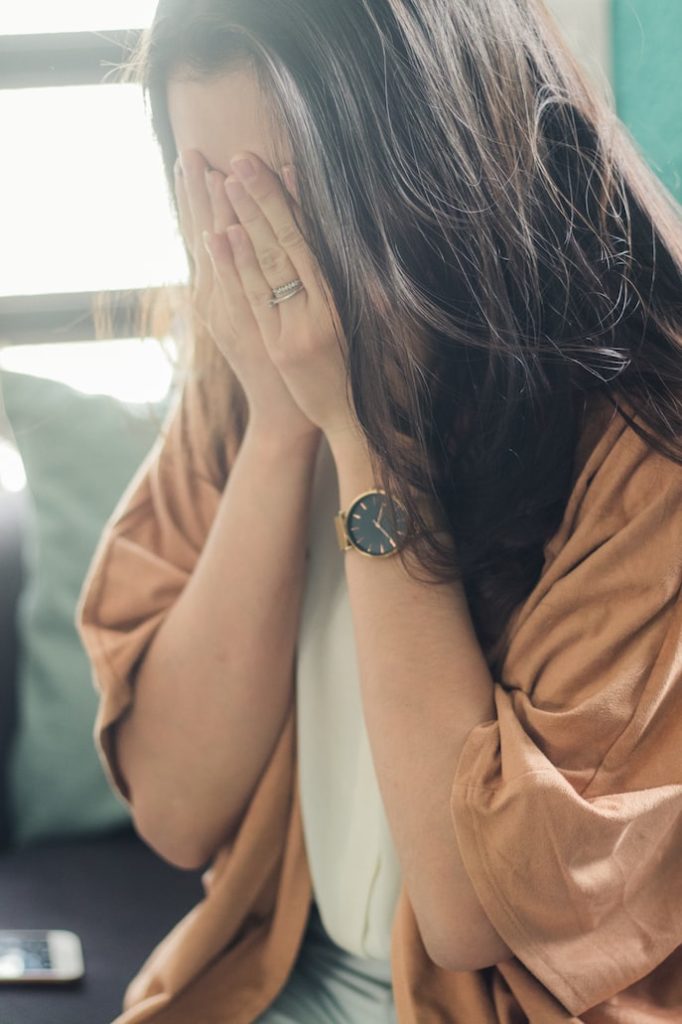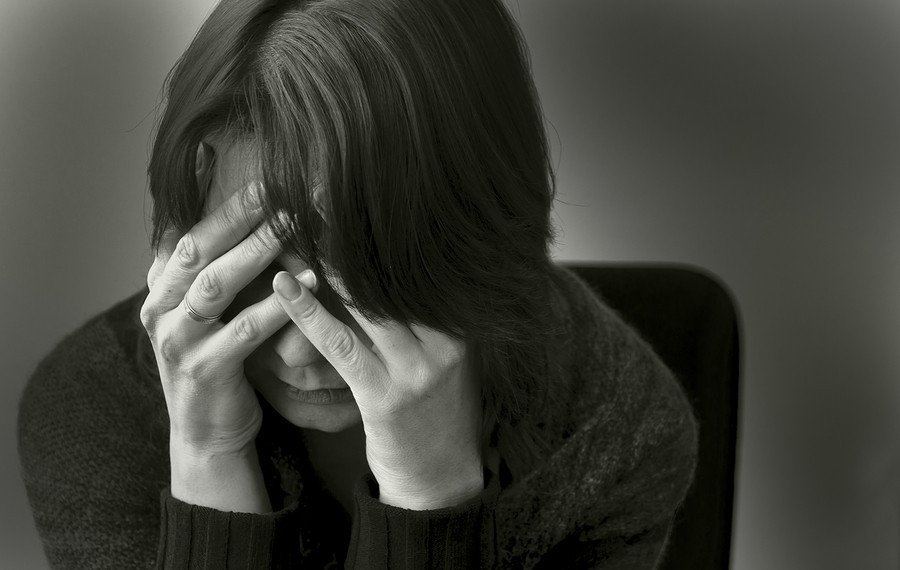Panic disorder in females is a type of anxiety disorder that is characterized by recurrent and unexpected panic attacks. Even though men have panic attacks, women will have some of the same symptoms as men but they will also have different symptoms.
Contents
- Panic Disorder In Females
- Panic Disorder Symptoms in Females
- Treating Panic Disorder In Females
- Treatment Options for Panic Disorder In Females
- Conclusion
Panic disorder is a relatively common mental health condition. It affects around 2-3% of the population in the United States.
It affects both men and women. Females will show the main symptoms as males but they will also show different types of symptoms.
The good news is that with effective treatment, most people with panic disorder are able to lead normal lives.
A panic attack is a period of intense fear or discomfort that typically lasts for several minutes, and is often accompanied by physical symptoms such as heart palpitations, shortness of breath, and nausea. Panic disorder can cause significant distress and interfere with daily activities.
The diagnosis is made when an individual experiences persistent and unexpected panic attacks, and is also concerned about having more attacks or about the consequences of the attacks.
Panic disorder is a serious mental health condition that affects millions of people every year. It can cause feelings of intense fear, worry, or anxiety in situations where there is no real danger.
In women specifically, there are a number of common signs and symptoms that indicate the presence of panic disorder. Here are the symptoms below:
Panic Disorder Symptoms in Females
1. Hyperventilating Or Rapid Breathing
Hyperventilating is one of the most common signs of panic disorder in women. This occurs when someone breathes quickly and shallowly, which can cause a person to feel dizzy, lightheaded, or even faint. If you notice that you are breathing rapidly for no apparent reason, it could be a sign that you are experiencing a panic attack.
2. Feeling Nauseous Or Dizzy
Many women with panic disorder experience feelings of nausea or dizziness when they are in the midst of a panic attack. These sensations can sometimes be so overwhelming that some people may even vomit or faint during an episode. It is important to remember, though, that these symptoms are temporary and will pass once the panic attack ends.
3. Frequent Headaches Or Migraines
Many women with panic disorder experience frequent headaches or migraines as a result of their condition. This is because stress and anxiety can cause changes in blood flow to the brain, which may exacerbate existing issues with headaches or migraines.
4. Changes To Your Menstrual Cycle
Panic disorder can also cause changes to your menstrual cycle, particularly if you are in the middle of a panic attack when you should be ovulating or menstruating. Anxiety and stress can sometimes cause changes in hormone levels that influence your reproductive system, so it is important to be aware of any changes in your cycle as a potential sign of panic disorder.
5. Trouble Sleeping Or Insomnia
Another common symptom of panic disorder is trouble sleeping or insomnia. When you are experiencing anxiety and stress, it can often be difficult to fall asleep or stay asleep throughout the night. This can leave you feeling exhausted the next day, which can increase your chances of having a panic attack.
6. Muscle Tension Or Chronic Pain
In addition to causing changes in your menstrual cycle and sleep patterns, anxiety and stress can also cause muscle tension or chronic pain as a side effect. This is because anxiety often causes our muscles to become tense, especially the muscles in our backs, necks, and shoulders. If you notice that your muscles are frequently tense or sore for no apparent reason, it could be a sign that you have a panic disorder.
7. Changes To Your Appetite Or Weight
Another common sign of panic disorder in women is changes in appetite or weight. This can occur when stress or anxiety causes you to either stop eating completely or eat more than usual, which can lead to changes in your weight over time. If you have noticed that your appetite has changed suddenly and unexpectedly, it could be a sign of panic disorder.
8. Depression Or Mood Swings
Depression is another common symptom of panic disorder in women, as it can cause feelings of sadness and hopelessness in those who are experiencing an attack. Although depression often occurs alongside anxiety, it can also be a sign that you have panic disorder on its own.
9. Frequent Trips To The Bathroom Or Diarrhea
If you frequently need to use the bathroom or experience diarrhea during panic attacks, it could be a sign that you have panic disorder. Anxiety and stress often cause changes to the digestive system, which can lead to diarrhea or trips to the bathroom when you are experiencing a panic attack.
10. A Feeling Of Impending Doom
Finally, one of the most common signs of panic disorder in women is a feeling of impending doom. When you are in the midst of a panic attack, it can feel as though something terrible is about to happen to you or those around you. While this feeling may seem irrational, it is actually a common symptom of panic disorder that many women experience on a regular basis.
Treating Panic Disorder In Females
If your current lifestyle and symptoms match any of these signs of panic disorder, it is important to speak with your doctor as soon as possible. This will allow you to get a diagnosis and begin treatment for your anxiety or stress before it becomes worse.
Treatment for panic disorder often involves prescription medications and cognitive behavioral therapy, but there are also many lifestyle changes that you can make to reduce the severity of your symptoms. Talk to your doctor today to learn more about different treatment options for panic disorder and how you can get help right away.
Even though there are many signs of panic disorder in females, it is important to note that not every symptom applies to everyone who has anxiety or stress. Additionally, the severity of each symptom may also vary from person to person.

However, if you are experiencing any of these signs or symptoms on a regular basis, it is important to seek help from a medical professional as soon as possible. This will allow you to get the treatment and support that you need so that you can start managing your panic disorder effectively.
It is also important to note that there are different treatments for panic disorder in males and females. Since men and women often experience panic disorder differently, it is important to work with a doctor who understands your gender’s specific needs when it comes to managing anxiety or stress.
Doing so will allow you to get the most effective and individualized treatment possible for your unique situation.
Treatment Options For Panic Disorder In Females
People should approach panic disorder in females upfront and with a willingness to help. This is because this condition can be very serious if not managed properly. It can disrupt lives, often resulting in subsequent health problems and possible difficulties in functioning socially or for work.
The most common treatments used for panic disorders are therapy, medication management, alternative therapy options and more. Here are some of the main treatment options below:
Treatment Options for Panic Disorder
- There are also various self-help techniques that one can try which may help reduce the symptoms of panic disorder. These techniques include deep breathing and relaxation techniques, as well as using cognitive behavioral therapy approaches.
- Therapy sessions will involve the individual meeting with a therapist who will help the person to better understand the causes of their panic attacks and how best to deal with them.
- Medication management can involve taking anti-depressants or beta blockers. These types of medication can provide relief from some of the symptoms, but they are not suitable for everyone. In addition, it is important to follow any instructions from the doctor and to stick with it, as these medications can have side effects.
- Some people find that alternative therapies such as yoga or massage therapy can be helpful in managing their condition.
- Additionally, it is important to get enough sleep, eat a healthy diet and exercise regularly.
Conclusion of Panic Disorder In Females
If you are experiencing symptoms of panic disorder, it is important to seek help from a medical professional as soon as possible. There are a number of different treatment options available for females with panic disorder, including therapy, medication management, and various self-help techniques.
To get the most effective treatment for your unique situation, it is important to work with a doctor who understands the unique needs of women with this condition. With proper treatment and support, it is possible to manage your panic disorder effectively and regain control of your life. If you feel like you may have panic disorder, see a doctor as soon as possible.


